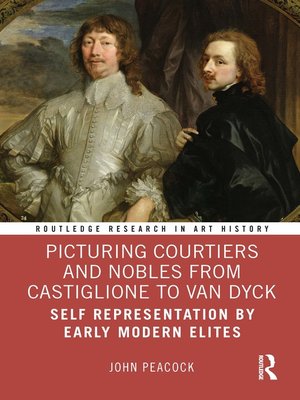Picturing Courtiers and Nobles from Castiglione to Van Dyck
ebook ∣ Self Representation by Early Modern Elites · Routledge Research in Art History
By John Peacock

Sign up to save your library
With an OverDrive account, you can save your favorite libraries for at-a-glance information about availability. Find out more about OverDrive accounts.
Find this title in Libby, the library reading app by OverDrive.



Search for a digital library with this title
Title found at these libraries:
| Library Name | Distance |
|---|---|
| Loading... |
This interdisciplinary study examines painted portraiture as a defining metaphor of elite self-representation in early modern culture.
Beginning with Castiglione's Book of the Courtier (1528), the most influential early modern account of the formation of elite identity, the argument traces a path across the ensuing century towards the images of courtiers and nobles by the most persuasive of European portrait painters, Van Dyck, especially those produced in London during the 1630s. It investigates two related kinds of texts: those which, following Castiglione, model the conduct of the ideal courtier or elite social conduct more generally; and those belonging to the established tradition of debates about the condition of nobility –how far it is genetically inherited and how far a function of excelling moral and social behaviour. Van Dyck is seen as contributing to these discussions through the language of pictorial art.
The book will be of interest to scholars working in art history, cultural history, early modern history and Renaissance studies.







